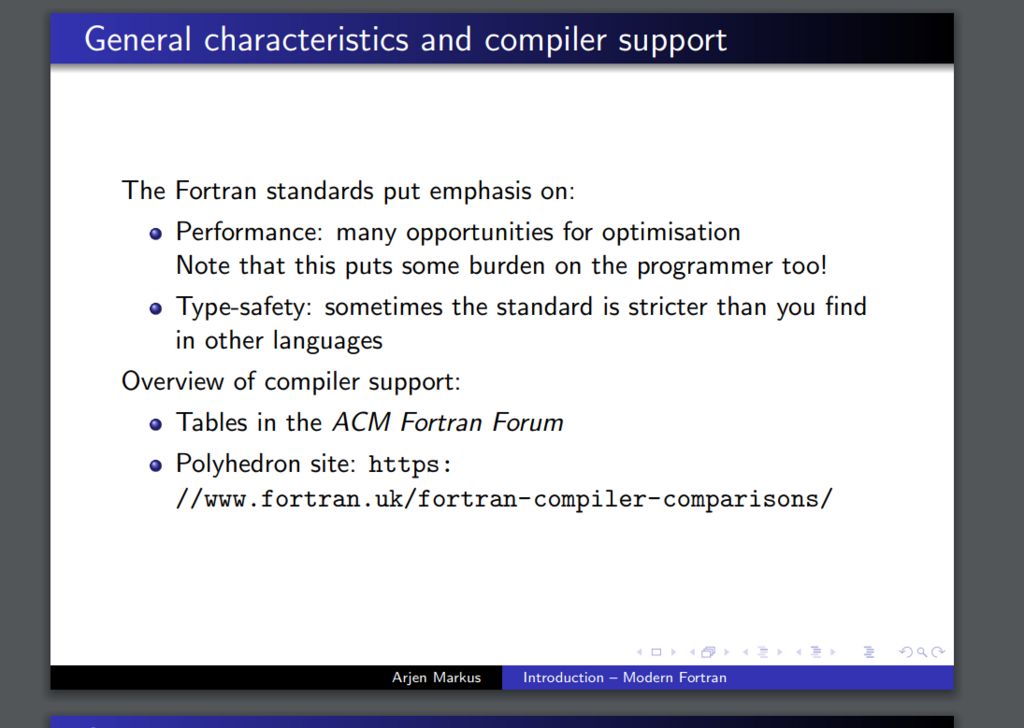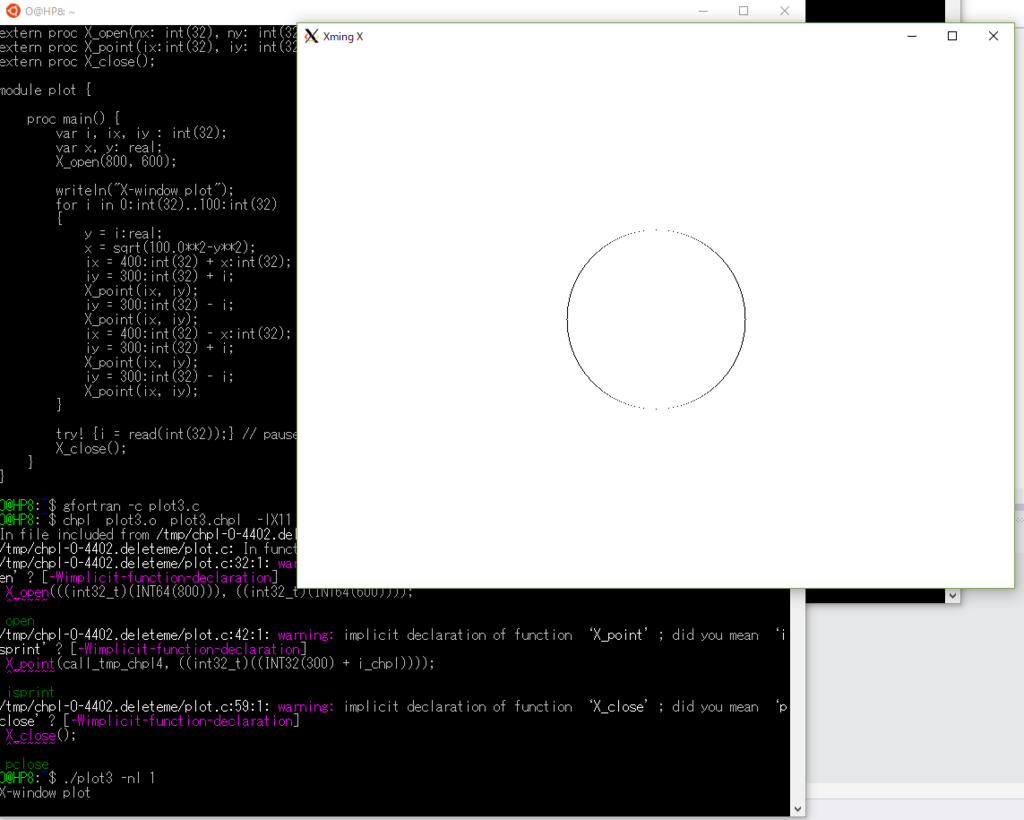CoArray Fortranで先着幾名かまで実行
atomic_ref と atomic_define で何とかなるかとも思いましたが、atomic な読み出しと書き込みの間隙をぬって、他の image が入り込む可能性があるので、critical .... end critical 構文でやる必要がある気がします。
Fortran2018 では atomic_fetch_add 関数が導入されるので、これが使えるようになれば楽になろうかともいます。
critical 構文と atomic サブルーチン
critical .... end critical 構文と atomic サブルーチンはどちらも排他的実行に関わるものです。これらの違いはというと、critical 構文は critical と end critical で挟まれた一連の命令文の排他的実行であり、atomic サブルーチンは coarray 変数に対する排他的操作になっています。
つまり critical の方が文の排他実行で抽象度が高いのに対して、atomic サブルーチンは単一の coarray 変数の値に対する低レベルな排他的な読み書きになっています。
Fortran 2008 の段階では、本当に読み出しないし書き込みしか出来ないため、利用しづらいものがあります。そのためか、Fortran2018 では、以下のように仲間が増えて拡充されます。
- call atomic add ( atom, value[ , stat] )
- call atomic and ( atom, value[ , stat] )
- call atomic or ( atom, value[ , stat] )
- call atomic xor ( atom, value[ , stat] )
- call atomic fetch add ( atom, value, old[ , stat] )
- call atomic fetch and ( atom, value, old[ , stat] )
- call atomic fetch or ( atom, value, old[ , stat] )
- call atomic fetch xor ( atom, value, old[ , stat] )
- call atomic cas ( atom, old, compare, new[ , stat] )
N2161 The New Features of Fortran 2018 (Reid - Replaces N2145) §3.20 New and enhanced atomic subroutines

- 作者: Michael Metcalf,John Reid,Malcolm Cohen
- 出版社/メーカー: Oxford Univ Pr
- 発売日: 2018/11/06
- メディア: ハードカバー
- この商品を含むブログを見る
プログラム
nr[1] を特別扱いして、カウンタとします。変数 k には先着順が入ります。
program caf04 implicit none integer :: ne, me, k, nr[*] real :: x ne = num_images() me = this_image() if (me == 1) nr = 1 sync all x = sqrt(real( me )) critical k = nr[1] nr[1] = nr[1] + 1 end critical if (k <= 4) print *, k, ':', me, '/', ne, x end program caf04
将来:
program caf04 use, intrinsic :: iso_fortran_env implicit none integer(atomic_int_kind) :: k, nr[*] integer :: ne, me real :: x ne = num_images() me = this_image() if (me == 1) nr = 1 sync all x = sqrt(real( me )) call atomic_fetch_add(nr[1], 1, k) ! 多分 if (k <= 4) print *, k, ':', me, '/', ne, x end program caf04
実行結果
1 : 1 / 8 1.000000
2 : 5 / 8 2.236068
4 : 7 / 8 2.645751
3 : 6 / 8 2.449490
続行するには何かキーを押してください . . .
Parallel Programming with Co-arrays (Chapman & Hall/CRC Computational Science)
- 作者: Robert W. Numrich
- 出版社/メーカー: Chapman and Hall/CRC
- 発売日: 2018/09/24
- メディア: ハードカバー
- この商品を含むブログを見る








